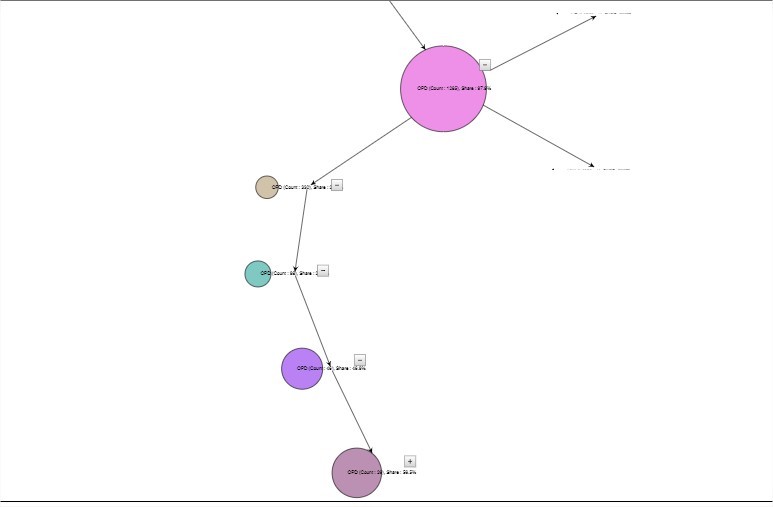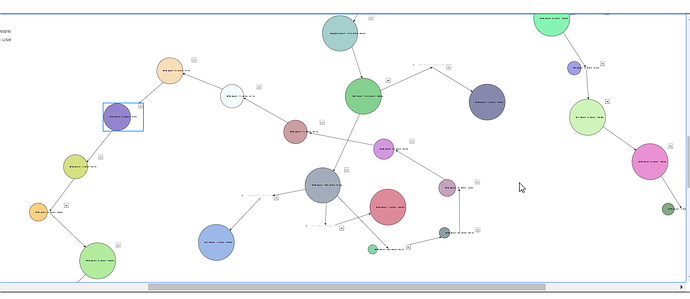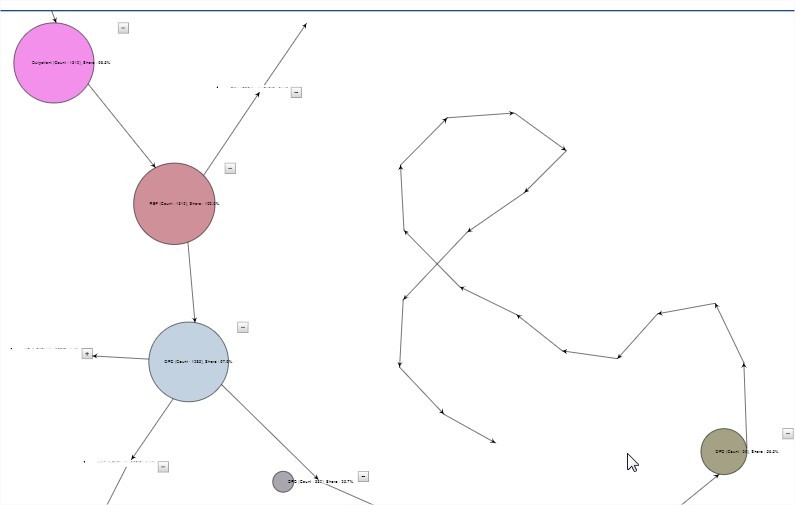I created an Incremental Tree as:
`var $ = go.GraphObject.make; // for conciseness in defining templates
myDiagram =
$(go.Diagram, "myTreeDiv", // must name or refer to the DIV HTML element
{
initialContentAlignment: go.Spot.Center,
initialAutoScale: go.Diagram.UniformToFill,
contentAlignment: go.Spot.Center,
layout: $(go.ForceDirectedLayout),
// moving and copying nodes also moves and copies their subtrees
"commandHandler.copiesTree": true, // for the copy command
"commandHandler.deletesTree": false, // for the delete command
"draggingTool.dragsTree": true, // dragging for both move and copy
"undoManager.isEnabled": true
});
// Define the Node template.
// This uses a Spot Panel to position a button relative
// to the ellipse surrounding the text.
myDiagram.nodeTemplate =
$(go.Node, "Auto",
{
selectionObjectName: "PANEL",
isTreeExpanded: true,
isTreeLeaf: true
},
// the node's outer shape, which will surround the text
$(go.Shape, "Circle",
{name: "SHAPE", height: 60, fill: "whitesmoke", stroke: "black" },
new go.Binding("fill", "color", function (dist) {
//dist = Math.min(blues.length - 1, dist);
return go.Brush.randomColor();//blues[dist];
})),
$(go.TextBlock,
{ font: "6pt sans-serif" },
new go.Binding("text", "text")),
// the expand/collapse button, at the top-right corner
$("TreeExpanderButton",
{
width: 20, height: 20,
alignment: go.Spot.TopRight,
alignmentFocus: go.Spot.TopRight
},
{ visible: true }) // end TreeExpanderButton
); // end Node`
And I insert the data in it as:
`var nodeDataArray = [];
for (var i = 0; i < seldiagnosysgroups.options.length; i++) {
if (seldiagnosysgroups.options[i].selected) {
for (var j = 0; j < arr_rsSort.length; j++) {
item = {}
item["key"] = seldiagnosysgroups.options[i].value + "_" + arr_rsSort[j].group_diagnosis;
item["text"] = arr_rsSort[j].group_diagnosis;
item["cnt"] = 0;
item["color"] = go.Brush.randomColor();
item["parent"] = seldiagnosysgroups.options[i].value + "_";
item["share"] = 0;
nodeDataArray.push(item);
}
}
}
---
---
---
myDiagram.model = new go.TreeModel(nodeDataArray);
myDiagram.nodes.each(function (n) {
if (n.data.text.indexOf("Count") >= 0) {
if (n.data.cnt < 30)
n.collapseTree();
}
})
`
This works absolutely fine and I get the diagram as:
But whenever I click on any leaf node to expand, it overlaps the new nodes on the existing nodes as:
Hence, completely messing up the diagram. So what can I do to open the leaf nodes in the blank area and not on the existing nodes?



